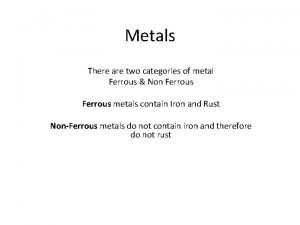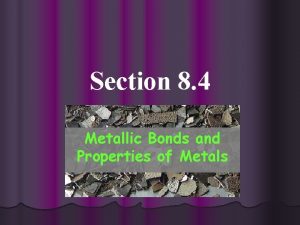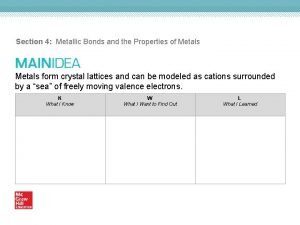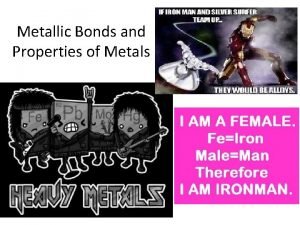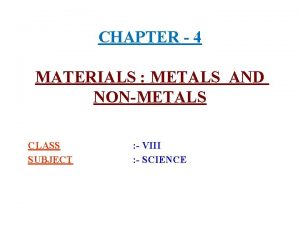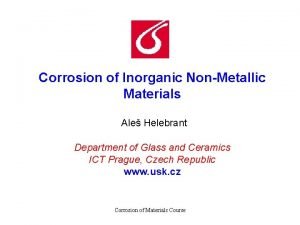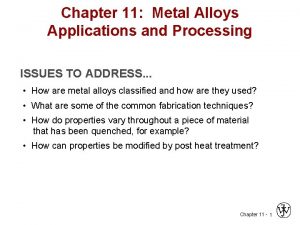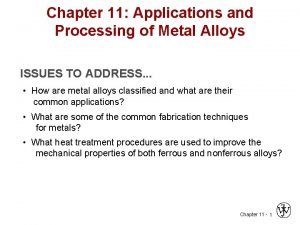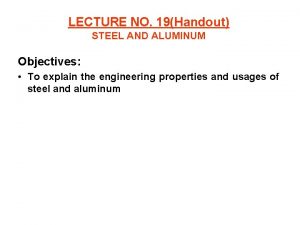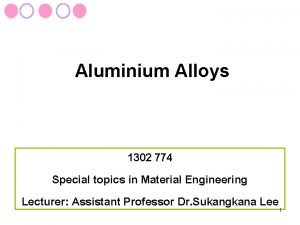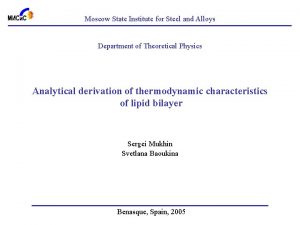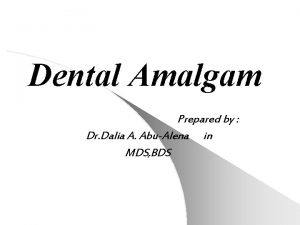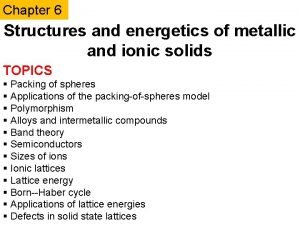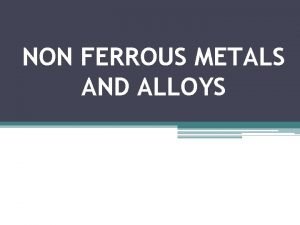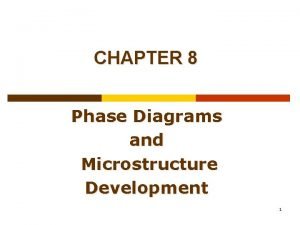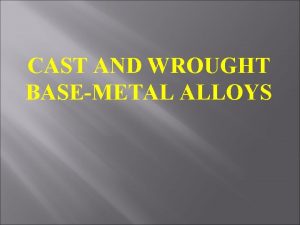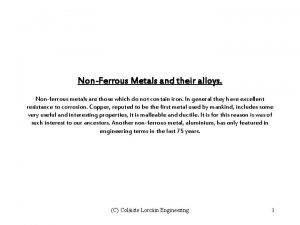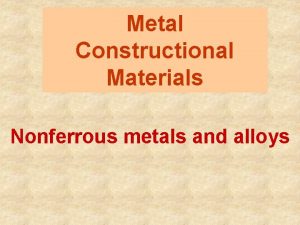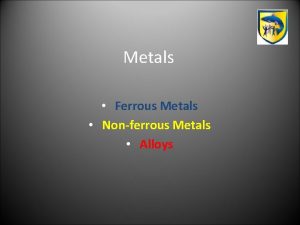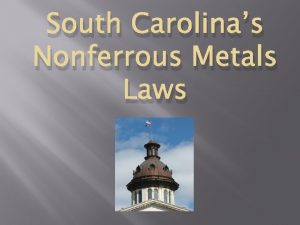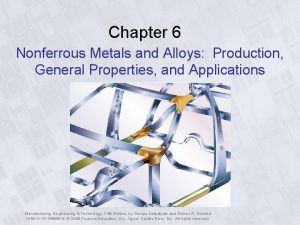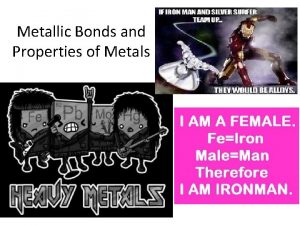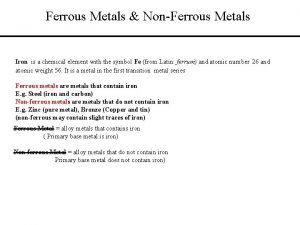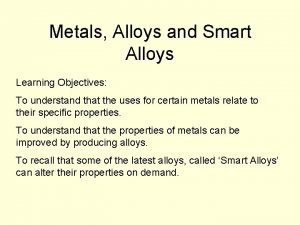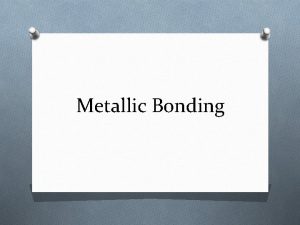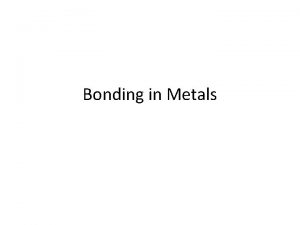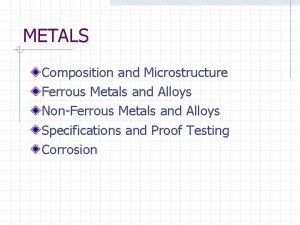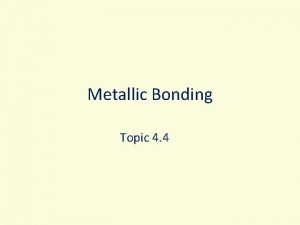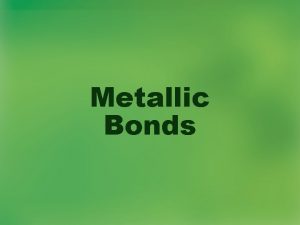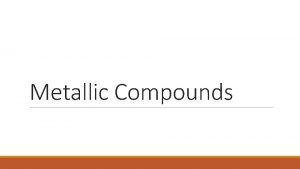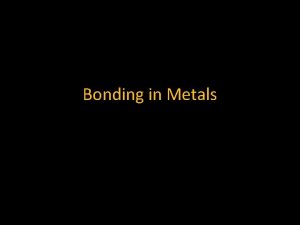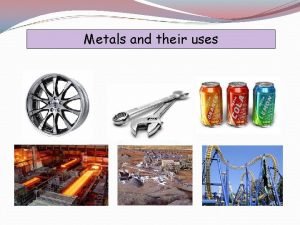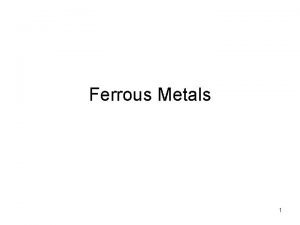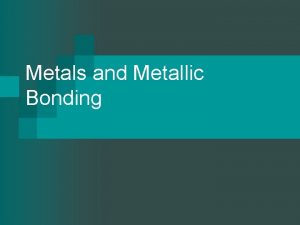METALLIC STRUCTURAL MATERIALS Nonferrous Metals and Alloys Prominent


![Classification of Nonferrous Metals 1. Light: Al, Mg, Be, [ Ti ] 2. Low-melting: Classification of Nonferrous Metals 1. Light: Al, Mg, Be, [ Ti ] 2. Low-melting:](https://slidetodoc.com/presentation_image_h2/14ab2137c04fb1208fd37a2f4a70a9a8/image-3.jpg)





















- Slides: 24

METALLIC STRUCTURAL MATERIALS Nonferrous Metals and Alloys

Prominent Features of Nonferrous Metals • • • Characteristic colour Low melting temperature Low hardness High plasticity Absence of polymorphic transformations
![Classification of Nonferrous Metals 1 Light Al Mg Be Ti 2 Lowmelting Classification of Nonferrous Metals 1. Light: Al, Mg, Be, [ Ti ] 2. Low-melting:](https://slidetodoc.com/presentation_image_h2/14ab2137c04fb1208fd37a2f4a70a9a8/image-3.jpg)
Classification of Nonferrous Metals 1. Light: Al, Mg, Be, [ Ti ] 2. Low-melting: Sn, Pb, Zn, Bi 3. Noble: Au, Ag, Pt, [ Cu ] 4. Refractory: W, V, Nb, Zr, Ti

Russian platinum coins of XIX century

Aluminium Alloys W – wrought alloys, C – cast alloys, NS – alloys not strengthened by heat treatment, S – alloys strengthened by heat treatment

Phase Diagram Al – Cu The eutectic consists of two phases: E = α + Cu. Al 2.

Microstructure of Duralumin Annealing 60 HB Quenching 75 HB Ageing 140 HB

Structural and Property Change in Duralumin in the process of Ageing t, °C Structural Change ≤ 100 -150 Guinier. Preston zones (ZGP 1) Long-term artificial ageing 100 -150 Guinier. Preston zones (ZGP 2) Artificial ageing 150 -200 Phase θ Artificial ageing 200 -250 Phase θ Type of Ageing Natural and low-temperature artificial ageing Property Change ↑ σт; σт/σв≤ 0, 7; ↑ δ, KCU, corrosion resistance σт/σв до 0, 95; ↓δ, KCU, corrosion resistance

Microstructure of high-strength aluminium alloy: Структура сплава на основе strengthening by disperse particles , where R is distance between particles алюминия:

Aluminium is an air-craft alloy (unit strength of its alloys is more than 20)

Titanium Alloys Alloying elements form solid solutions (а) or eutectoid mixes (b) with titanium a b

Phase diagram Ti – Al L L L

Microstructure of titanium alloy ВТ 6 after quenching (titanium martensite)

Microstructure of titanium alloy ВТ 15 after quenching and ageing

Native Copper

Copper is one of the most plastic metals. Slip lines on a polished copper surface

Rolled copper wire is the most important material for electrical industry

Phase Diagram Copper–Zinc L

Strength and plasticity of brass depending on zinc content

Brass articles made by cold sheet metal stamping

Phase Diagram Copper–Tin

Bronzes properties depending on tin content

Microstructures of bronzes

Specific characteristics of metallic materials Материал Material Марка Grade (Russian) МПа σσTВ, , MPa /(ρ·g), км σTВ/(ρ·g), km Magnesium Сплав магния alloy МА 10 430 21 21 2, 3 700 23 2, 4 1500 30 2, 6 03 Н 18 К 9 М 5 Т 2000 27 Бериллий 680 37 Beryllium 680 37 Сплав алюминия Aluminium alloy Сплав титана Titanium alloy Сталь Steel В 96 ВТ 15 700 1500 23 30 EE/(ρ·g)· 10 -3, -3 км , km 2, 3 2, 4 2, 6 16, 1
 Categories of metal
Categories of metal Section 4 metallic bonds and the properties of metals
Section 4 metallic bonds and the properties of metals Section 4 metallic bonds and the properties of metals
Section 4 metallic bonds and the properties of metals Metallic bond
Metallic bond Metals on periodic table of elements
Metals on periodic table of elements Metal vs non metal
Metal vs non metal Natural science grade 7 term 3 notes
Natural science grade 7 term 3 notes Term 2 natural science grade 7
Term 2 natural science grade 7 Reactivity periodic table
Reactivity periodic table Ferrous vs non ferrous
Ferrous vs non ferrous Chapter 4 metals and nonmetals
Chapter 4 metals and nonmetals Inorganic non metallic materials examples
Inorganic non metallic materials examples Application and processing of metal alloys
Application and processing of metal alloys Applications and processing of metal alloys
Applications and processing of metal alloys Aluminum and its alloys
Aluminum and its alloys Aluminum and its alloys
Aluminum and its alloys Moscow institute of steel and alloys
Moscow institute of steel and alloys Disadvantages of consensus decision making
Disadvantages of consensus decision making Microfusion cast & alloys
Microfusion cast & alloys Zinc amalgam is an alloy of
Zinc amalgam is an alloy of Substitutional alloy examples
Substitutional alloy examples Shape memory alloys lecture notes
Shape memory alloys lecture notes Non ferrous alloys definition
Non ferrous alloys definition Development of microstructure in isomorphous alloys
Development of microstructure in isomorphous alloys Wrought alloys in dentistry
Wrought alloys in dentistry
